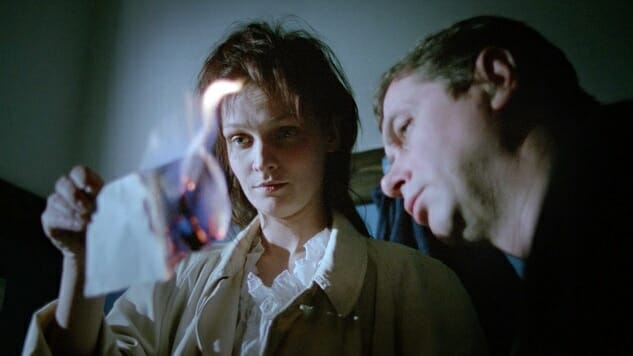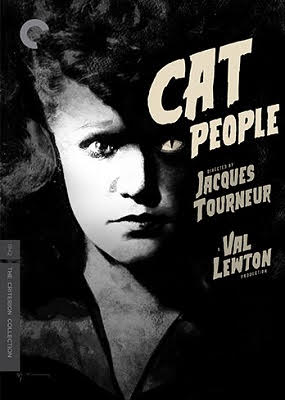
Each month, the Paste staff brings you a look at the best new selections from The Criterion Collection. Much beloved by casual fans and cinephiles alike, The Criterion Collection has for over three decades presented special editions of important classic and contemporary films. You can explore the complete collection here. In the meantime, here are our top picks for the month of September:
 Dekalog
Dekalog
Director: Krzysztof Kieslowski
Year: 1989
Much has been made of the so-called “New Golden Age of Television”—specifically in regard to shows like The Sopranos, The Wire, Breaking Bad, Mad Men, Game of Thrones, et al. These programs and others—many developed for risk-taking cable networks—are where so many American art house and independent cineastes have found a new home the past 15-20 years.
But the marriage of art house and television is not a new thing. In fact, what many consider to be the greatest television series of all time came about during the late 1980s on state-run Polish television: Krzysztof Kieslowski’s 10-part anthology, Dekalog.
Kieslowski’s 1988 series came to the Criterion Collection in September with a stunning new restoration and high-definition transfer that returns the master of Polish cinema to the fore—and not a moment too soon. If the world ever needed a healthy dose of Kieslowski’s artful yet humane social realism, it is now.
Best known for his “Three Colors” trilogy—Blue (1993), White (1994), and Red (1994)—Kieslowski began his career as a documentarian but soon turned to narrative filmmaking, which he felt afforded more artistic freedom under the then-oppressive, Soviet-controlled Polish regime.
Few have so successfully made the transition from documentary to narrative, and even fewer have retired at the height of their powers as Kieslowski did with the release of Red at the Cannes Film Festival in 1994. (He would die of complications from a heart attack less than two years later.)
What we find in Dekalog is a meditation … not so much on the laws of Moses, though that is Kieslowski and co-screenwriter Krzysztof Piesiewicz’s inspiration. Dekalog is about existential choices and material consequences. It’s about the ache of our collective humanity and mostly futile longing for grace. This “dekalog” of films is about an Old Testament God … the one who emblazoned his rules on stone tablets. Love is scant, mercy nonexistent.
Though many of Dekalog’s characters strive, there is little hope for release. These are brittle, wintry films—stories scraped out of brisk and often snowy landscapes, played out in front of humorless, Soviet-era urban architecture. Indeed, Kieslowski, who watched his fellow Pole Karol Józef Wojtyla named Pope John Paul II in 1978, is not our priest. He, like the rest of us, must navigate this sea of human tragedy and loss alone. God, if he exists, is aloof. Unconcerned. Far, far away.
Though Kieslowski adamantly refused to identify which film goes with which commandment, Dekalog: Five clearly finds its inspiration in the (Catholic) fifth commandment, “Thou shalt not kill.” It is the story of the brutal murder of a cab driver by a young drifter. Then suddenly, it transforms into the story of that murderer’s brutal execution at the hands of the state. Such is Kieslowski’s approach to all 10 of these films: twists, turns, flips, contortions. Capturing us, riveting us, making us look at what we’d rather not see.
There is a lesson here for new and emerging filmmakers, a call to use the language of cinema for a deeper, less judgmental kind of storytelling. But there is also a lesson in empathy for Dekalog’s audience: Slow down, stop, wait, think.
Of note is Zbigniew Preisner’s harrowing score, which should be considered a classic of post-modern cinema. Primarily known for motion picture and television music only, Preisner’s Requiem for My Friend (1998) became his memorial to Kieslowski, after he’d initially written it to score his next film. The Lacrimosa from this piece aptly appears in Malick’s The Tree of Life.
As we’ve come to expect, the Criterion release of the anthology is spectacular—with newly restored 4K digital transfers of all of the films, a fascinating selection of archival interviews with director Kieslowski recorded during and just after production, new and archival interviews with Dekalog cast and crew, including co-writer Piesiewicz, three of Kieslowski’s cinematographers, and editor Ewa Smal, and the requisite Criterion-collected insert booklet featuring a new essay and capsules on the films by Paul Coates, along with excerpts from Kieslowski on Kieslowski.
This is a must-have addition to any respectable film library. And for the uninitiated, the release marks a useful introduction to the work of Kieslowski, whose power is undeniable. —Chris White
 Cat People
Cat People
Director: Jacques Tourneur
Year: 1942
What an excellent noir to add to the Criterion Collection. Jacques Tourneur and Val Lewton’s Cat People is as mournful and chilling as it must have seemed in 1942. Throughout the film there is a bittersweet feeling for Simone Simon’s Irena Reed as she struggles with love and affection in a world full of very real horrors. Along with those thrills and scares, the film evokes a genuine sadness and sympathy for its characters, each coping within a love triangle, each coping in a world they try their best to fully understand, each coping with a force stronger than they would like to admit: loneliness. Less psychological noir, more brilliant character study, Cat People ranks high in terms of well-crafted filmmaking, let alone genre—tightly paced and utterly brilliant in style and scope. By letting us imagine what might be happening, Lewton and Tourneur brought new life to horror. —Nelson Maddaloni
 Beyond the Valley of the Dolls
Beyond the Valley of the Dolls
Director: Russ Meyer
Year: 1970
Kids today. You show ’em one season of Game of Thrones and they have a straight-up crap attack about the sheer number of exposed bosoms that make it into each 10-episode span of narrative. What would they think if they sat through Beyond the Valley of the Dolls, a movie that appears to be either contractually obligated or legally mandated to flash skin every 20 seconds throughout its 109-minute running time? Such is the filmmaking standard of the late, great Russ Meyer, though the woefully uninformed should be apprised of the equally late, equally great Roger Ebert’s involvement in the film as Meyer’s collaborator. Ebert wrote the script; he and Meyer developed the story. It’s pure exploitative, satirical bliss, the kind of film you’re not technically supposed to enjoy but do anyway, because how can you not? Beyond the Valley of the Dolls is a veritable sugar rush of softcore porn and psychedelia blended with an unhinged critique of the entertainment industry. It’s an electric treasure trove of goodness that pop culture has been vulturing from since Sublime first thought to sample its dialogue as an intro to one of their best-known songs (and since before even that). Check your taste at the door. Better yet, bring it in with you and let Meyer and Ebert school you on the merits of debauchery. —Andy Crump
 Valley of the Dolls
Valley of the Dolls
Director: Mark Robson
Year: 1967
Perhaps the Criterion Collection is at its best when it surprises us the most. At first glance, Mark Robson’s critically reviled Valley of the Dolls seems like a bizarre choice. But this is a hidden gem, a film considered so bad it’s good that instead comes across as more a misunderstood classic. The cinematography is brilliant, the colors pop, the acting, while campy, deserves credit. While maybe not as fun or as zany as Russ Meyer’s sequel, the original is a more subtle melodrama with a visual palette akin to that of Douglas Sirk. At times it is heart-wrenching, especially with consideration to Sharon Tate’s Jennifer, who perhaps never stood a chance in the cutthroat world of entertainment. Other times, we see the spiraling existential despair of Neely as she comes to terms with her career, growing worse than what she had once despised in Susan Hayward’s Helen Lawson. It is an intricate character study as well as an examination of the effects of addiction, and not just popping pills. The film is far more psychologically sound than once acknowledged, and now that it has become a part of the Criterion Collection, it should receive much-needed (re)evaluation. —N.M.
 Blood Simple
Blood Simple
Director: Joel & Ethan Coen
Year: 1984
Blood Simple, the Coen brothers’ dark and bloody entrance into Hollywood, is exactly what you’d expect from a directorial debut of important filmmakers. Amid a thin script, rough acting and an uneven style, there emerge hints of potential—greatness, even. The film functions much like Bottle Rocket does for Wes Anderson. Despite the flaws, it proves unique and interesting in its own right yet only a slight shadow of what’s to come, and brilliance since realized. For cinephiles and serious followers of the Coens, Blood Simple thus remains essential cinema. —David Roark